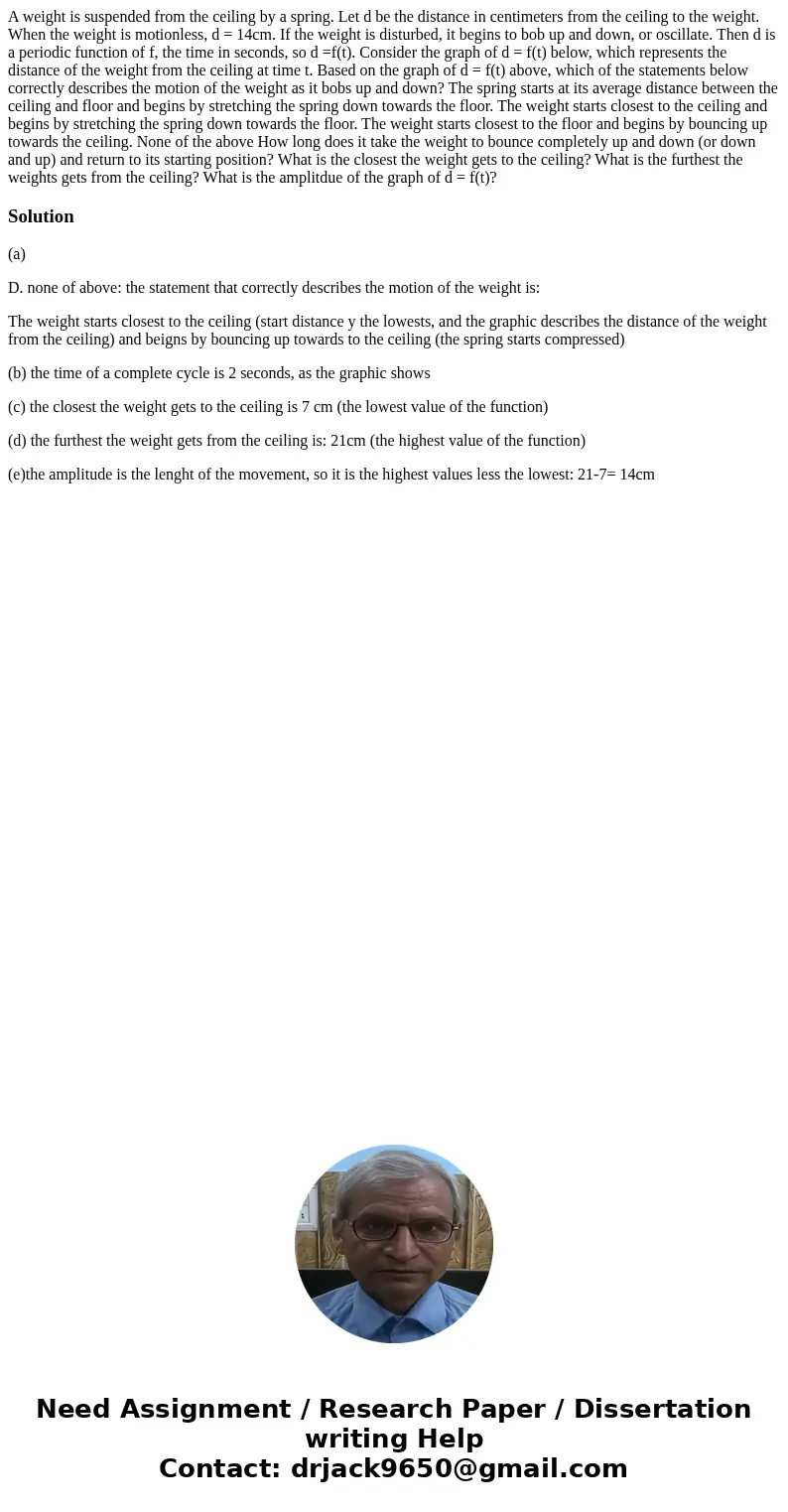A weight is suspended from the ceiling by a spring Let d be
A weight is suspended from the ceiling by a spring. Let d be the distance in centimeters from the ceiling to the weight. When the weight is motionless, d = 14cm. If the weight is disturbed, it begins to bob up and down, or oscillate. Then d is a periodic function of f, the time in seconds, so d =f(t). Consider the graph of d = f(t) below, which represents the distance of the weight from the ceiling at time t. Based on the graph of d = f(t) above, which of the statements below correctly describes the motion of the weight as it bobs up and down? The spring starts at its average distance between the ceiling and floor and begins by stretching the spring down towards the floor. The weight starts closest to the ceiling and begins by stretching the spring down towards the floor. The weight starts closest to the floor and begins by bouncing up towards the ceiling. None of the above How long does it take the weight to bounce completely up and down (or down and up) and return to its starting position? What is the closest the weight gets to the ceiling? What is the furthest the weights gets from the ceiling? What is the amplitdue of the graph of d = f(t)? 
Solution
(a)
D. none of above: the statement that correctly describes the motion of the weight is:
The weight starts closest to the ceiling (start distance y the lowests, and the graphic describes the distance of the weight from the ceiling) and beigns by bouncing up towards to the ceiling (the spring starts compressed)
(b) the time of a complete cycle is 2 seconds, as the graphic shows
(c) the closest the weight gets to the ceiling is 7 cm (the lowest value of the function)
(d) the furthest the weight gets from the ceiling is: 21cm (the highest value of the function)
(e)the amplitude is the lenght of the movement, so it is the highest values less the lowest: 21-7= 14cm

 Homework Sourse
Homework Sourse